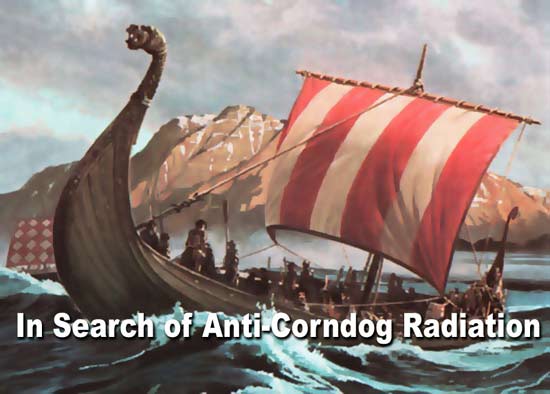
Years of laboratory and statistical analysis have led to consensus in the scientific community on the subject of corndogs. The Corndog Tastiness Theory stood up to every scrutinizing test devisable and has now been declared a law of nature, taking a place alongside motion and thermodynamics to form the triumvirate pinnacle of scientific achievement.
There is still some dispute on the development of corndogs. Why did they only appear in the late Nineteenth Century? Was there some physical mechanism suppressing their creation? Hardnosed researchers, resembling film noir detectives more than scientists, have at last untangled this daunting enigma.
Axes & Alleys spoke with Professor Samantha Blockart, whose latest paper (co-authored with graduate student Sydney Favre) has sent shockwaves through the laboratories, universities and research-o-toriums of the world. It’s hard to imagine that this fedora-wearing, trench coat wrapped scientific maven, unassuming in most regards, could have finally solved this riddle through her Anti-Corndog Development Radiation Hypothesis, which states that a previously unknown form of energy created by the existence of Vikings prevented the creation of the delectable treat.
“It’s impossible to believe that a wonderful, tasty, self-contained comestible such as the corndog would not have been invented earlier in human history,” says Blockart. “Early peoples had meat and corn, and could easily have created the corndog. Yet all the evidence points to the Fletcher brothers introducing the batter-dipped meat sausage on a stick in 1942.” She concluded that “the means to do this existed beforehand, so why were they not created?”
“See, after looking at this proud progenitor of the moist, juicy dogs we enjoy today, it hit me: corndogs weren’t developed until after Scandinavians stopped going viking, creating polities in their homelands and colonies across the sea. Somehow, Viking warriors prevented corndog development. Nowhere in the sagas do we find a king outlawing corndog research, so it follows that the Scandinavians didn’t even know they were standing in the way of corndogs. The only answer is that by plundering monasteries and raping women from the North Sea to the Mediterranean, they were creating an emission of some sort of energy that prevented corndogs. It’s the only possible explanation.”
For five years, Blockart and her graduate research team have investigated every site of Scandinavian incursion and settlement from Norway and Denmark, to Eastern England and even the old midden heaps of Dublin. They spent several seasons cataloguing artefacts and scanning them with advanced equipment such as eyes and hands.
Their findings have been overwhelmingly positive, as not a single fragment found throughout the Scandinavian regions has any detectable trace of Anti-Corndog radiation, proving that in the ten centuries following the cessation of large scale raids by Scandinavians, all the energy had dissipated. So powerful was this energy that it took more than a thousand years to fade, allowing the development of corndogs to begin in the 1920s.
Mr. Favre said that we should all thank Christianity for the corndog “Without the centralizing authority of the Church, as well as the cultural influence and increased military strength of the Northern and Western Europeans, the Scandinavians wouldn’t have discovered how much nicer it was to settle down, do some farming, and enjoy intercourse with willing, monogamous partners.”
After pulling a fresh corndog from the warming carousel Dr. Blockart has running in her office, Mr. Favre concluded “because of that, their Anti-Corndog Development Radiation eventually disappeared, leading to us being able to enjoy wonderful, wonderful corndogs.” At which point, Mr. Favre took a bite of his corndog with gusto.
